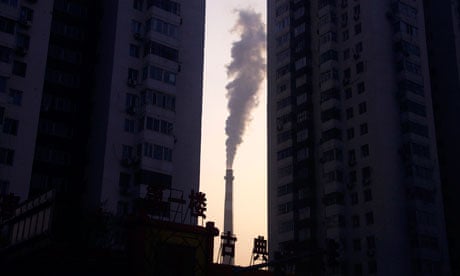For too long, developed countries have used the excuse there is little point in acting to tackle climate change, if China, now the world's biggest emitter, doesn't act too. Sandbag's new report into the emergence of emissions trading in China shows the speed and extent to which things are changing and we argue that Europe must now increase its own ambitions.
All too often China's size and rapid development leads people to the conclusion that no action is being taken on climate change, that it is a polluting behemoth whose addiction to coal undermines all global efforts to avoid the worst effects of climate change. It is certainly true that in terms of addressing climate change few countries matter as much as China. A report from the International Energy Agency (IEA) shows that in 2009 China and the US alone accounted for 41%, or 12Gt, of the worlds carbon dioxide emissions. Yet China must be understood in context. It is a rapidly developing superpower with a bewilderingly large population, facing increasing social tension fuelled by, among other things, its environmental limitations.
Over the past 30 years, China has experienced unprecedented economic growth. Its ability to provide cheap goods for western export markets, coupled with the opening up of domestic markets has transformed the country. Yet a reliance on low-skilled labour coupled with high resource use is bringing with it increasingly unwelcome social, environmental and political tensions.
Chinese authorities are acutely aware that environmental pressures can overflow into social unrest. The recent protest in Haining due to the pollution from a solar panel factory, the furious public reaction over Conoco Phillips' slow response to the oil spillage in China's Bohai Sea, and the escalating demands for more transparency of air quality data in Beijing are recent examples of rising public sensitivity towards environmental issues.
China is also increasingly conscious that its ability to deal with escalating environmental concerns through traditional command and control measures is becoming increasingly inadequate. China's economy has become too sophisticated to be managed in a traditional style. In 2010, to meet the energy efficiency targets set out in the 11th five-year plan (FYP), old and inefficient factories were ordered to close. Nevertheless the target was narrowly missed. China has realised that alongside command and control measures, attitudes need to be changed fundamentally to embrace innovation and sustainability.
This has caused China, through the adoption of the 12th five-year plan, to pursue a more sustainable economic model, focusing on qualitative economic and social development. The newly adopted plan runs till 2015 and includes prominent energy efficiency and carbon intensity targets. Touted as the greenest FYP ever, it introduces emission trading as one of the innovative new policy tools to be tested. China has already announced pilot projects to be implemented in five municipal areas – Beijing, Chongqing, Shanghai, Shenzhen and Tianjin – and two provinces – Guangdong and Hubei – from 2013.
The location for these seven projects has been well thought out. Each has been selected carefully to reflect the different levels of economic development and wealth of the country. They will allow China to test various emissions trading models, allowing for experience to be gathered on a municipal and provincial level before any such scheme is implemented on the national level in 2016.
China is drawing on lessons learned from the existing emissions trading schemes around the world. The EU has a wealth of experience in pricing carbon, it's emissions trading scheme – the largest in the world – provides valuable insight into how to, and arguably, how not to, set about implementing an emissions trading scheme. But the Chinese are not only looking to the EU, they are rightly learning from other countries and regions including Australia, New Zealand and California.
As details steadily emerge it is clear that they have embraced the need to set absolute caps on emissions and that there are likely to be parallel markets established for upstream, direct emitters and downstream users of energy.
China is advancing rapidly. Many challenges remain but the speed of advancement and the ambition of it's emissions trading plans are remarkable. Europe needs to realise that its position as the world leader in carbon pricing will not remain so for long particularly if it fails to act to revive its own ailing scheme.
